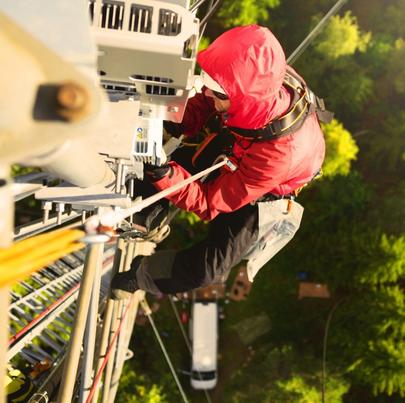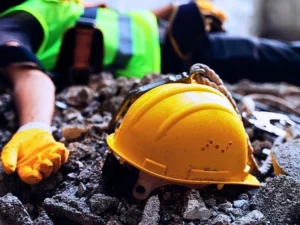There are plenty of ways employees can experience injuries on the job, but here are some of the most common that can result in a workers’ compensation claim in many cases. Consultants for the National Safety Council travel across the globe to visit different workspaces and conduct safety audits, and these are some of the more common workplace dangers they’ve found. A workers compensation attorney can help with cases involving these types of injuries.

1. Working from Tall Heights
Working at height is a common factor in workplace injuries, accounting for approximately 14 percent of all fatalities in 2014. As a result, many OSHA standards pertaining to ladders and scaffoldings are typically among the most heavily violated.
In many cases, employers may fail to provide sufficient protection from falls, or gear may not be properly worn or hooked up. Employers should always identify areas where fall protection is needed, along with where engineered anchor points are located. They also need to train employees and perform regular audits to test all protective measures.
2. Inadequate Housekeeping
Fire exists, emergency exits, and aisles need to remain consistently clear of clutter. Over-stacked loads are also frequently an issue, blocking sprinklers and rendering them inefficient. Leaks, debris, and standing water can also result in slip and fall accidents.
While many employees may be able to clean up messy workspaces on their own, they may need to notify a supervisor in cases where specialized cleaning crews are required.
3. Extension Cords
Blocked breakers are a frequent culprit in injuries related to electrical hazards, but another common issue concerns improper use of extension cords.
Daisy-chaining, or using multiple power cords or extension cords for a single device can present a significant electrical hazard. However, doing this is often necessary in many facilities with frequently changing layouts, but employees and supervisors should implement safety measures and maintain a clean facility at all times.
It’s also important to keep in mind that extension cords should only be used temporarily, within days at a time instead of weeks or months. Otherwise, their use can end up violating OSHA’s standards.
4. Forklifts
One of the central causes of forklift accidents in the workplace is when workers are rushed. When under pressure, employees may attempt to take shortcuts such as driving with an oversized load, or they may become distracted. This could result in hitting a rack, damaging products or property, or injuring one or more employees. Lack of maintenance checks and insufficient separation of vehicles from pedestrians can also result in more forklift accidents and injuries.
5. Insufficient Tagout/Lockout
Proper tagout/lockout procedures can play an important factor in preventing serious injuries in the workplace, but employers and employees must follow these procedures. Many facilities may have the right procedures in place, but don’t follow through with them.
For example, an employee might go home for the day with his or her lock on, and the next worker on shift cuts the lock. Another example would be if a worker uses a label on older equipment for which secure lockout is more challenging. Also, instead of using an industrial-strength chain to lock a valve in place, employees may use a cheap wire that can easily be cut.
Even if procedures are followed, faulty equipment can still cause failures and subsequent injury. For instance, a worker may use worn instruments to check a locked out piece of equipment, exposing him to a live cable that shocks him.
Complacency, rushed work, and unfamiliarity with equipment are the three main causes of lockout/tagout procedure violations.
6. Chemical Spills and Exposure
Facilities should always implement a control system when using chemicals, particularly if they accumulate over time. Even small 5-gram bottles containing chemicals can become more unstable over the years. Chemicals such as ether can even become explosive peroxide over time. Companies need to understand what chemicals are intended for along with why they ordered them, as OSHA requires facilities to keep track of all of their inventory.
Chemical spills and exposure and injury resulting from transferring chemicals from one container to another are two common hazards.
7. Confined Spaces
Another hazard to be cautious about involves confined spaces. Many of the injuries that have occurred in confined spaces could’ve been avoided with risk assessments or permit issuances.
Even drains are considered confined spaces requiring permits to enter, unbeknownst to many employees. However, if all permit process and risk assessments are properly performed, employers will be able to facilitate a safer workspace.
To protect employees from all seven of these hazards—along with many others—employers need to make sure they have all safety measures put in place to avoid injuries or tragic deaths. If an employee suffers an injury because of a failure to adhere to OSHA standards, they can seek compensation with the help of a workers compensation attorney.







